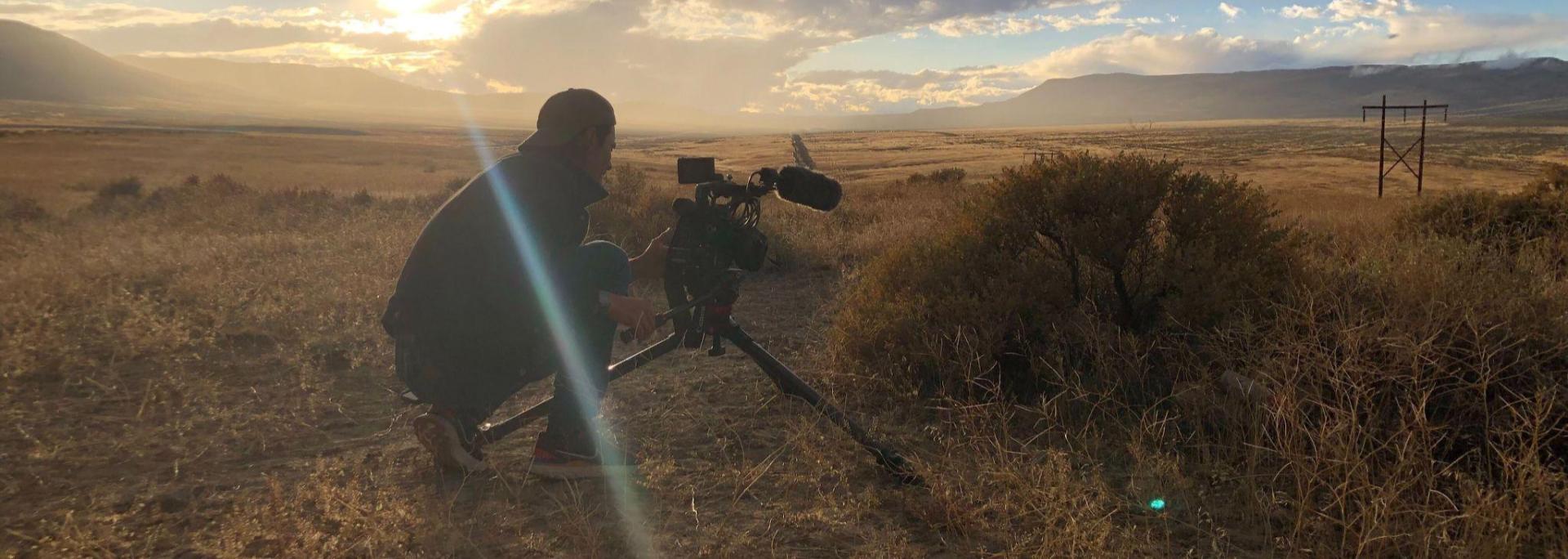A groundbreaking investigation of the impact on America’s water supplies from lithium mines, reported by students working in the Howard Center for Investigative Journalism at Arizona State University’s Walter Cronkite School of Journalism and Mass Communication, has gained national attention from renowned media outlets.
The Howard Center’s investigation, “Lithium Liabilities,” aired on PBS NewsHour on Thursday, Jan. 25 and will run in USA Today. “Lithium Liabilities” examines how the proposed expansion of lithium mines would further deplete the water supply in the American West and other parts of the country.
“We are very proud that Howard Center students are at the center of every part of this investigation,” said Mark Greenblatt, executive editor of the Howard Center. “They did the investigative research, data analysis, poured through tens of thousands of pages of environmental disclosures, traveled to multiple states for interviews, piloted drones, and we even had one of our students rise to the level of narrating more than nine minutes of video that aired nationally on NewsHour.”
The investigation focuses on a lithium mine in Silver Peak, Nevada and how the mine has caused underground water sources to dwindle and, in some cases, disappear. The series examines the implications on water sources from 72 lithium mines that have been proposed in nine states.
The Howard Center’s reporting team included 11 graduate and four undergraduate students, along with support from faculty and other centers at the Cronkite School. The project was overseen by Greenblatt and Lauren Mucciolo, the Howard Center’s executive producer.
“I’m proud of these students for producing this extraordinary, impactful project that caught the attention of esteemed national media outlets. This is an example of the many opportunities for students to flourish at the Cronkite School,” said Cronkite School Dean Battinto L. Batts Jr.
Howard Center student Caitlin Thompson served as the lead federal government investigative reporter and an investigative producer for the project. Thompson said she didn’t expect to gain this type of advanced experience at such an early stage of her career.
“It’s helped me grow not just as a teammate and collaborator but also as an investigative reporter,” Thompson said. “This is by far the most challenging investigation I’ve ever done and it’s really prepared me for the next step in my career.”
Morgan Casey, who worked as a national investigative reporter and fact-checking coordinator for the project, said her favorite moment of the investigation was seeing the different aspects come together.
“I am incredibly glad that I was an investigative reporter with the Howard Center. It is a once in a lifetime opportunity and really just the best way to apply the investigative skills that I have been learning over the course of a year into a real investigation,” Casey said.
The complete multimedia investigative project, “Lithium Liabilities,” also includes additional text stories, interactive maps and graphics, and even a game where readers can try their hand at opening a new lithium mine while facing inherent regulatory and environmental challenges. The project can be found here: https://azpbs.org/lithium.
The Howard Centers at Cronkite and the University of Maryland were established in 2019 under grants from the Scripps Howard Fund to advance deeply researched watchdog journalism and train the next generation of investigative reporters. The centers honor the legacy of Roy W. Howard, former chairman of the Scripps-Howard newspaper chain and a pioneering news reporter.
For more information on the Cronkite School’s Howard Center and its projects, email howardcenter@asu.edu.
